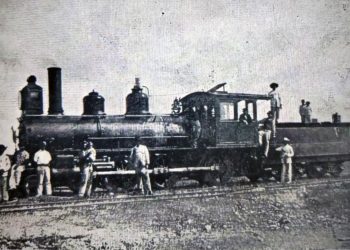Cuba began mass production of its own vaccine against the new coronavirus, while dozens of streets in Havana and other provinces remain in quarantine and closed to traffic.
In the midst of an outbreak that worsened in January and that has multiplied infections on the island, the capital has become one of the epicenters of the new infections, so the authorities decided to close several of the city’s areas and streets, especially in the People’s Council of Los Sitios, in the municipality of Centro Habana, as reported by The Associated Press this Monday.
“We are trying curb the epidemic,” Vladimir Matos, a 45-year-old government official, told AP, posted next to one-and-a-half-meter-high metal fences that impede the passage on the corner of Reina and Manrique streets. “We have a guaranteed organization here. The infected people are not in their homes, they are in (specialized) centers.”

Along with Matos, police officers control passage by means of an identity document so that only residents enter and in general no one leaves. The authorities put up giant tents where bread, eggs and other foods are sold for families to buy. Centro Habana has 152,000 inhabitants, many of them living in dilapidated buildings that have been converted into tenement houses.
“It’s pretty well organized,” said neighbor Eduardo Jonhson, a 61-year-old retiree. “I have risk perception, I did the ‘screening’ (tests)…it’s not fear, it’s precaution. I don’t make visits and when I go out I follow all the measurements.”
In other territories of the capital such as Old Havana, Cerro and Arroyo Naranjo, there have also been closures of blocks and buildings, and some streets have yellow ribbons and police control that impede passage.
During his television appearance, the island’s director of Epidemiology, Dr. Francisco Durán, indicated that since March 2020 to date there have been 45,361 confirmed cases of COVID-19 and of them 300 deaths—four reported this Monday. In addition, 19,873 people are admitted to specialized centers, of which 4,968 are active cases and the rest are under surveillance or suspects.
For months, Cuba kept the pandemic under relative control, but a strong outbreak occurred after the authorities established in November the opening of airports and authorizations for commercial flights—which had been canceled since March—and a de-escalation of control measures.
Although tourists were received, they remained generally isolated from the population. However, the imminence of the end of the year holidays attracted thousands of Cubans residing abroad who traveled to see their families and they spread the virus. The government once again imposed measures such as the obligatory nature of tests for travelers, the reduction of flights—especially from the United States, Panama and Mexico—and the mandatory quarantine in specialized centers.
Classes—which had started— also had to be suspended, restaurants and recreational centers were closed again, public transportation was limited and a night curfew was imposed in the capital itself. The use of the mask is still mandatory, as well as social distancing.
At the same time, the National Center for Biopreparations (BIOCEN) reported this weekend that the Soberana 02 vaccine, developed by the Finlay Institute, already started being produced in scale. With it Cuba hopes to complete the application of 150,000 doses—its phase III clinical trial—in March.
“The industrial production of the # Soberana02 vaccine has already been introduced at @BIOCEN. Great has been the effort of our researchers and technicians to get here,” Eduardo Martínez, the president of BioCubaFarma, the state company in charge of manufacturing medicines on the island, wrote on his Twitter account.











